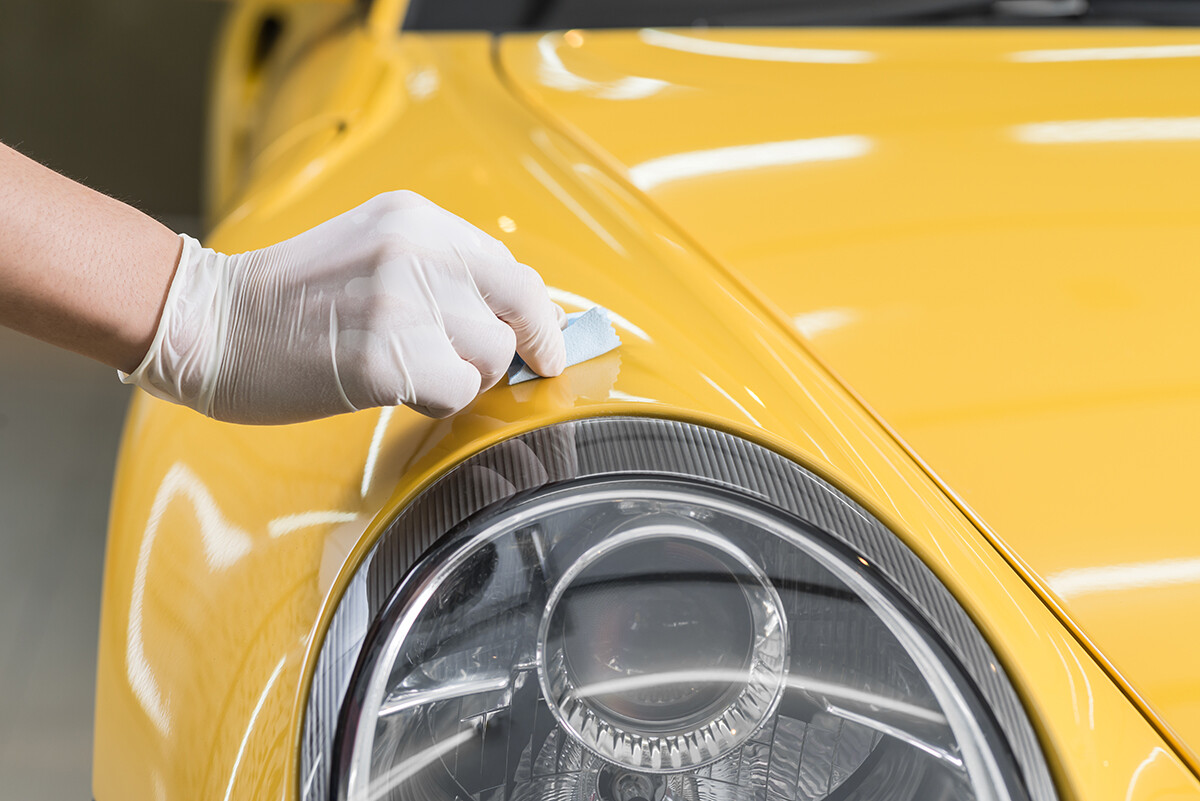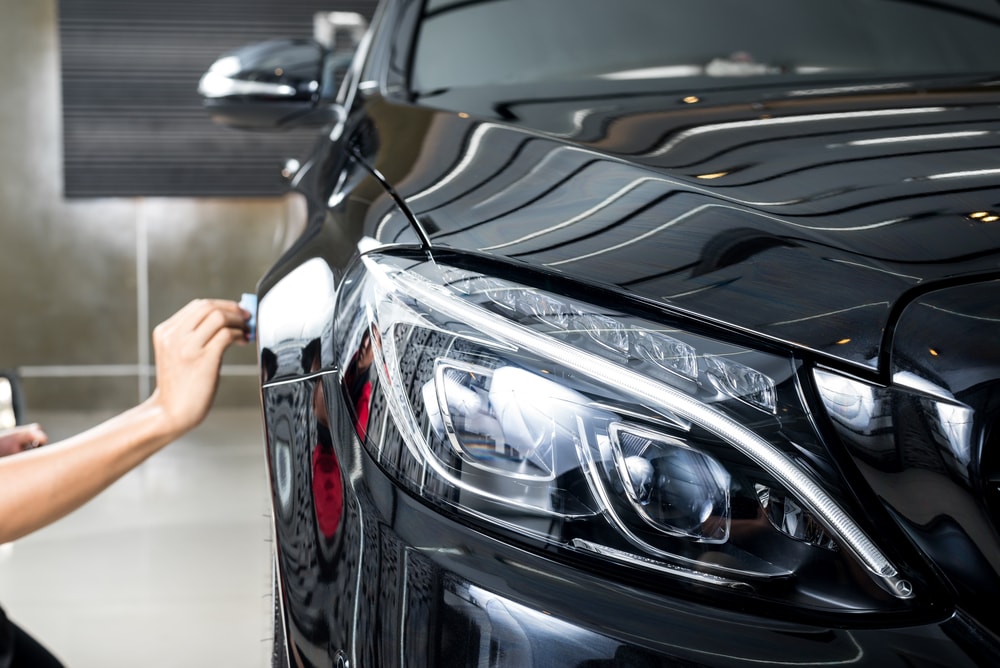Unveiling the Science Behind Ceramic Coatings: Just How Does It Job and Why Is It Superior to Standard Choices?
Ceramic coverings have actually been obtaining appeal in numerous industries for their extraordinary efficiency and longevity. The science behind these coverings exceeds plain surface area defense, diving right into the elaborate chemistry that makes them stand out from traditional alternatives (ceramic coatings san jose). Comprehending exactly how ceramic finishes work and why they outshine conventional alternatives is essential for those seeking to improve the durability and resilience of their materials. So, what exactly establishes ceramic coatings apart, and just how do they attain such impressive outcomes?
The Chemistry of Ceramic Coatings
In recognizing ceramic finishes, diving into the intricate chemistry behind their structure is necessary for realizing their capability and durability. Ceramic coverings are largely made up of silicon dioxide (SiO2), which develops a solid and safety layer when used to various surface areas. This chemical structure supplies extraordinary resistance to heat, chemicals, and rust, making ceramic coatings extremely searched for for a large range of applications.
The chemistry behind ceramic finishes involves the formation of covalent bonds in between silicon and oxygen atoms, creating a stiff network that boosts the covering's sturdiness and resilience. In addition, the existence of various other components such as zirconium, aluminum, and titanium more boosts the finishing's homes, supplying increased hardness and bond to surface areas.
Recognizing the chemical composition of ceramic finishings permits for the customization of formulations to fit certain demands, whether it be for automotive, industrial, or domestic functions. By taking advantage of the power of chemistry, ceramic coatings remain to pave the method for remarkable security and efficiency in different sectors.
Advantages of Ceramic Coatings

As a result, ceramic layers make cleaning and maintaining surfaces much less complicated and much less time-consuming. In general, the wide variety of advantages offered by ceramic coverings make them a remarkable alternative contrasted to typical coating methods.
Exactly How Ceramic Coatings Bond
Ceramic finishes bond to surface areas via a procedure that involves molecular adhesion and chemical interactions. When a ceramic covering is related to a surface, it develops a strong bond by chemically sticking to the surface at a molecular degree. This bond is developed through the formation of covalent bonds, which are durable and extremely solid. The ceramic layer's particles pass through the pores of the surface area, developing a limited hold that withstands splitting up.
Additionally, the chemical interactions between the ceramic coating and the surface area better improve the bond. ceramic coatings san jose. These interactions allow the ceramic layer to develop a seamless and continuous click for more layer on the surface, offering excellent defense and toughness. Unlike standard coverings that may remain on the surface without totally bonding, ceramic finishes produce a permanent bond that is immune to chemicals, UV rays, and severe ecological problems

Basically, the bonding system of ceramic coverings ensures a reliable and resilient protective layer that outmatches standard covering alternatives. This exceptional bond adds to the toughness, scratch resistance, and long life of ceramic coverings, making them a recommended option for numerous applications.
Sturdiness of Ceramic Coatings
The extraordinary long life of ceramic finishings originates from their robust molecular attachment and chemical interactions with surface areas, ensuring a long lasting safety layer that exceeds typical coating options. As soon as applied, ceramic coatings develop a solid bond with the substratum, creating a durable obstacle versus various environmental stress factors such as UV radiation, chemicals, and abrasions. This bond is so secure that it can stand up to the roughness of day-to-day use without degrading or weakening quickly.
Unlike standard finishes that might break down over time, ceramic finishings preserve their integrity for an extended period, giving durable security for the underlying surface. Overall, the phenomenal longevity of ceramic layers makes them a remarkable option for protecting a wide variety of surfaces in numerous applications.
Ceramic Coatings Vs. Standard Options
In contrast to standard coating methods, ceramic finishings use a distinct mix of resilience and protective abilities that set them apart in various surface protection applications. Conventional options such as wax or sealants give a short-lived layer of defense that can disappear quickly, requiring frequent reapplication. On the various other hand, ceramic coatings form a solid bond with the surface area, developing a semi-permanent or irreversible barrier that is highly resistant to abrasion, chemicals, UV rays, and severe temperature levels.
Additionally, ceramic finishes use exceptional hydrophobic buildings contrasted to standard finishings. The hydrophobic nature of ceramic finishings causes water to grain click now up and roll off the surface area, bring dust and impurities with it. This self-cleaning impact helps to keep the surface's cleanliness and gloss for extensive durations, decreasing the demand for regular maintenance.
In addition, ceramic finishes have a thicker layer compared to traditional choices, offering boosted scratch resistance and protection versus minor effects. This resilience ensures resilient performance and aids preserve the visual appeal of the dealt with surface for an extensive period.
Verdict
In conclusion, the scientific research behind ceramic finishings depends on their chemical structure and bonding residential or commercial properties, making them premium to conventional options. The advantages of ceramic coverings consist of increased toughness and protection for surface areas. By recognizing how ceramic finishes work and their advantages over typical options, one can make educated choices when considering finishing alternatives for various applications.
Unlike standard coatings that might sit on the surface area without fully bonding, ceramic finishings develop a permanent bond that is resistant to chemicals, UV rays, and extreme ecological problems.
The remarkable durability of ceramic layers stems from their robust molecular adhesion and chemical communications with surface areas, guaranteeing a durable protective layer that surpasses typical layer choices.Unlike standard layers that may break down over time, ceramic coverings maintain their honesty for an extensive period, giving long-lasting security for the underlying surface area.In contrast to standard coating methods, ceramic coverings provide an unique blend of sturdiness and protective abilities that set them apart in various surface protection here are the findings applications. By understanding just how ceramic finishes job and their advantages over conventional options, one can make informed choices when taking into consideration layer alternatives for different applications.